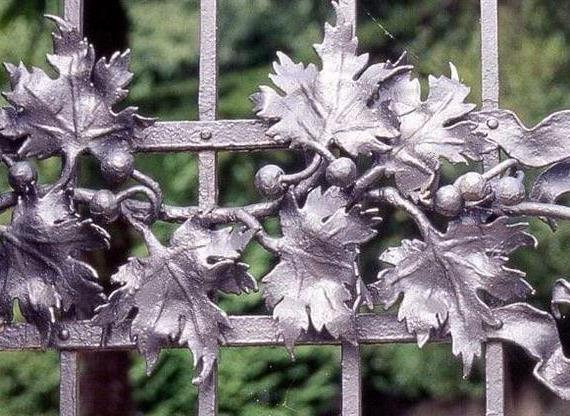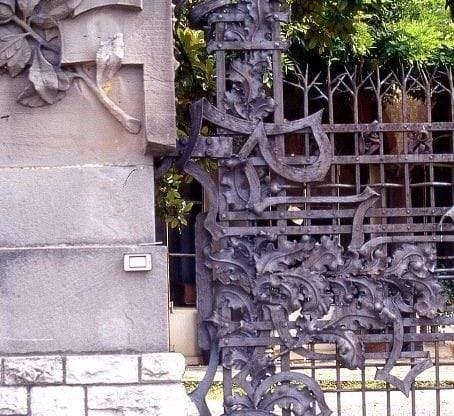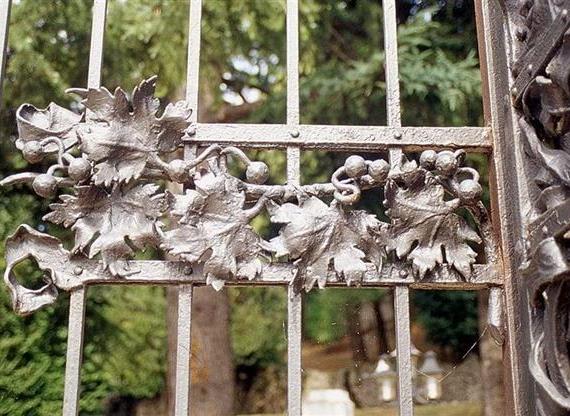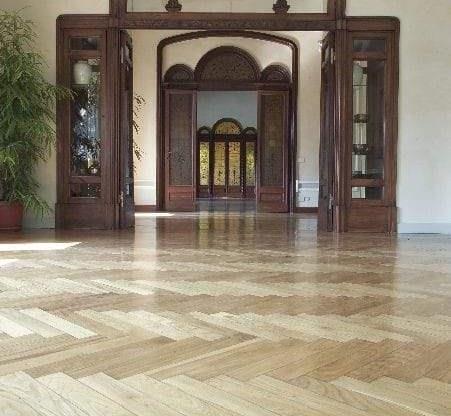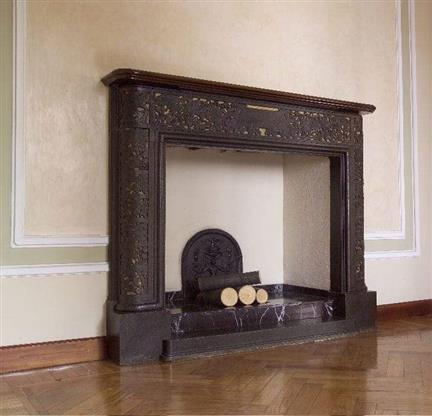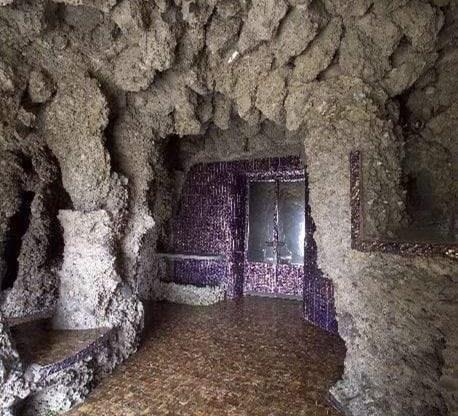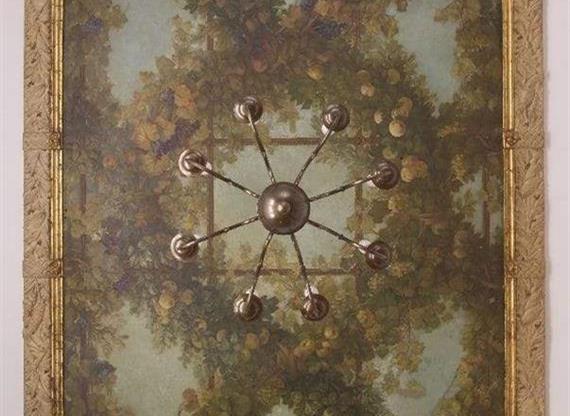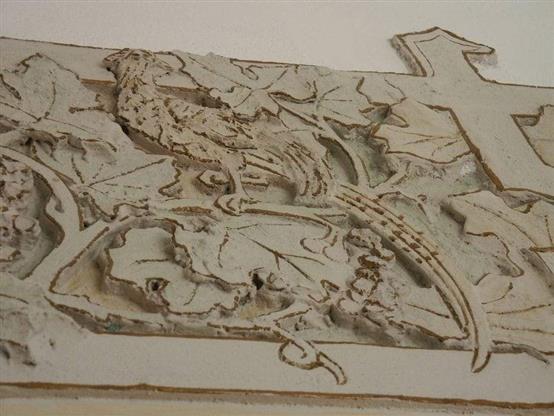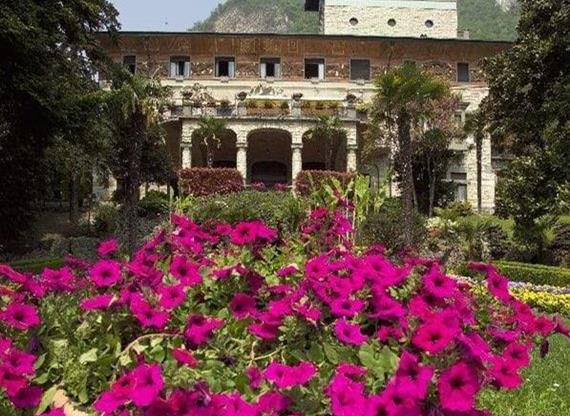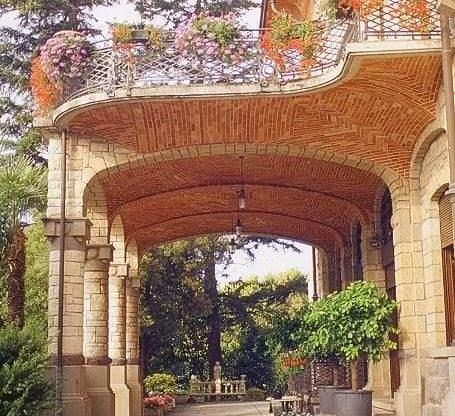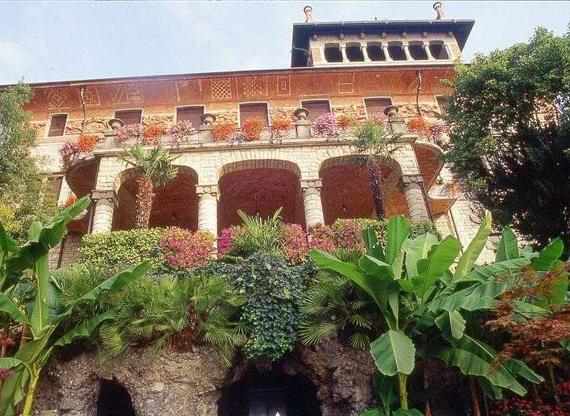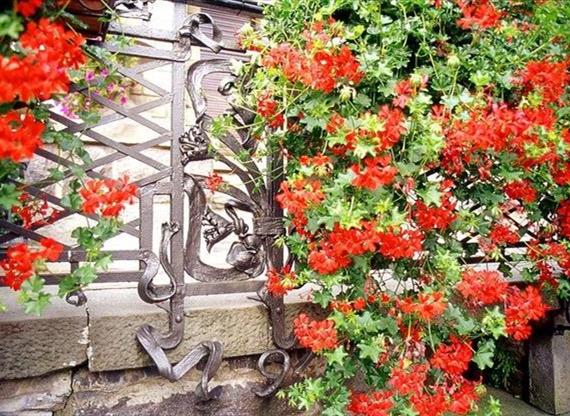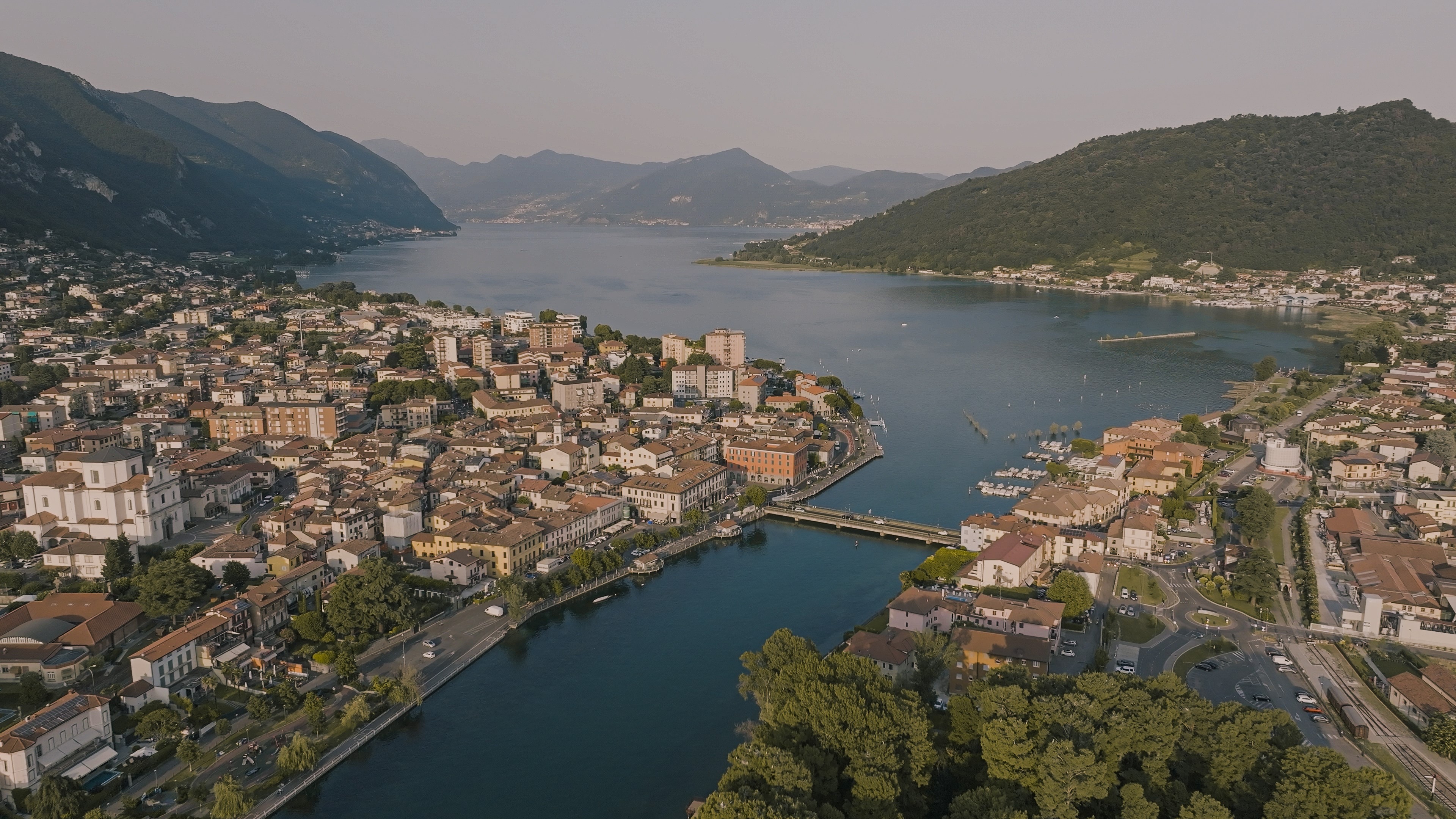
Ch. 9 - VILLA LUIGI FACCANONI, then BORTOLOTTI, now SURRE (1912)
Address: Via Predore, 5 Sarnico BG
Historical-artistic notes
In “Faccanoni” Giorni tells us that Luigi Faccanoni was born on 21st June 1867 in Savona. He graduated from the Polytechnic of Milan in 1892 and began to work with his brothers and relatives, all entrepreneurs mainly in the sector of public works (bridges, roads, ports, railways – it was during the building of the railways in Liguria that Luigi and Giuseppe were born). He took part in several projects both in Italy and in the Austro-Hungarian Empire. He contributed to the construction of 80 kilometers of the Vienna aqueduct. He was Mayor of Predore from 1917 to 1920; as his uncle Antonio did in Sarnico, he gave his village a Kindergarten which he named after his parents. In Vienna, he married Erminia Lorek; he died in 1939.
He met the architect Giuseppe Sommaruga in Milan, and after the latter had completed his Milan villa which is now the Columbus Nursing Home, he designed a large villa for him, far from the town and on the road to Predore in “Surre”. The villa is surrounded by a large park and is linked by a bridge to the landing on the lake. Some time ago it was bought by his great-grandson Achille Bortolotti, now deceased. The villa currently belongs to Tamoil but is inhabited only occasionally. Both Luigi Faccanoni and his son Giuseppe, known as Giusy, lived here at length. In addition to this villa Luigi Faccanoni and another villa in Milan, which was then sold to Romeo (1919) and is now the Columbus Nursing Home. The villa in Milan, built in 1907, was also the work of Sommaruga.
In recent years, Villa Surre has undergone some major restoration, initially by Achille Bortolotti and more recently by Armani and Tamoil, who also renovated the garden. The old building uphill from the villa, for tools and the stables, has now been fitted out and converted to a conference and training center (Sarnico Studies and Training Centre), and the villa could be its guest lodge.
The exterior
The Villa Luigi Faccanoni is a majestic and complex building that was designed at the beginning of the last century by the genius and imagination of Giuseppe Sommaruga. It is a composition of rare elegance of Medieval and romantic inspiration, which is exalted in the rigor of its evocative park with a characteristic grotto and an exhedra entrance with beautifully wrought iron railings by Mazzucotelli, built with his usual craftsman’s skill and creative energy. In this villa too the cement decorations and friezes constantly echo the wrought iron decorations which use the same ornamental motifs.
The gate and railings are characterized by interwoven leaves which mingle and contrast with the structure formed by rectilinear bars, knotted ribbons, whimsical vines, leaves, and branches.
The bas-reliefs are by Ernesto Bazzaro; the walls are made of stone, with cement decorations, and end with a cove gutter; a decorated terra cotta band bears the date 1912. there is a small porter’s lodge on the left.
Sommaruga, an architect of Modernism, executed one of the basic concepts of Modernist thought: that of the artist who conceives and designs the architectonic object in its totality and on all the different levels.
Sommaruga supplied, down to the tiniest details, models, and drawings of the decorations, from wrought iron to cement, from plaster decorations to frescoes he followed the work and supervised their installation.
According to Bairati and Riva, the work which, more and better than any other, allows us to define the real relationship of Sommaruga with tradition is this villa of 1912. here we can truly accept the definitions of Manfredini and Monneret, given earlier, as here we are in the face of an extremely personal reinterpretation of a climate which is reminiscent, in a certain sense, of the Renaissance.
The building, on first sight, vaguely recalls, in some of its elements, villas of the Medicis. However, approaching it and putting into focus its decorative and constructive details, we became aware of how far it is from a slavish reproduction of Renaissance stylistic features but succeeds in evoking those images only through the allusion to individual episodes.
In this sense, the anomalous construction of the artificial grottoes used as aquariums and located in the garden, which more than anything else recreates a Manieristic climate, finds in the inserts of colored ceramics in the rocks an analogy, probably totally by chance, with certain polymaterial mixtures by Gaudì.
The external composition of the façade recalls similar solutions to those adopted in Baveno for the Carosios or later in Lanzo d’Intelvi for the Cirlas.
The entrance is made up of a wide porch, a balcony on the first floor, supported by two pillars-columns and it opens laterally onto wide stairways, which join together on the front. Here, more than the Baroque tradition, Sommaruga is looking at the Mannerist tradition, from which he takes a twofold lesson: on the one hand, the consummate capacity of treating surfaces through the use of different materials and their different treatment with surprising effects of light and color are obtained and, on the other, a certain tendency to consider the facades as independently definable wings. Thus, his preference for footings of rustic ashlar work, with parts in smooth ashlar, ceramic bands, and plastic cement, is sometimes accompanied by a method of composition that proceeds by subsequent additions of parts.
The villa, with a closed plan and compact volumes, is fairly anomalous from the stylistic point of view of Sommaruga and denotes, with its impressive and rectangular mass, a certain stiffness. Completely faced in stone, the façade has the traditional regular alignment of windows, and the large balcony (added many years later, in 1926, and not part of Sommaruga’s design) appears like a rather conventional pronaos. The front seems to have the sole aim of containing the large high reliefs by Bazzaro which, with their dynamic and Baroque sumptuousness, represent the outstanding elements of the whole.
In the garden of the villa, Luigi Faccanoni had a stone erected with the bust of Pietro Paleocapa (1788-1869) – a famous hydraulic engineer, Collare dell’Annunziata – some statues, a fountain, a gazebo, some decorated stone benches, an aviary and the characteristic grotto at the entrance of the villa. A bridge, originally made of stone with an arch design, joined the villa to the landing; the bridge had to be demolished when the road was widened and it was replaced by an iron one.
The interior
Sommaruga also designed the interior of the villa: the large stairs in wrought iron by Mazzucotelli, in a central position and illuminated by large windows (as in the Villa Giuseppe Faccanoni of 1907) stand out. This large villa, with its 34 rooms, is an example of a sumptuous dwelling of the bourgeoisie. On the main floor there is a sequence of rooms that still have their original doors windows and decorations; the internal distribution, perhaps bound by the client’s requirements, does not have the free and easy articulation of the villa Giuseppe Faccanoni (1907).
In July 1957, an article appeared in the “Rivista di Bergamo” on the cellars Faccanoni had built under the villa with the entrance in the grotto.
Two wines were produced and sold by his son Giusy Faccanoni: “Chiarello del Lago d’Iseo” and “Bianco di Villa Surre”. Only a few bottles were produced but they were exquisite choice wines.
The equipment was very modern for the period and bottled 3,500 bottles an hour, aiming to reach 8,500. Giusy Faccanoni’s aspiration was to collect all the wine of the region’s growers there and launch it as a single type, the typical wine of Valcalepio. Unfortunately, nothing came of these plans because the local vineyards, where for centuries the good “Predorino” had been produced, were uprooted to make a way for property speculation.
The villa, both the exterior and the interior, is currently in a perfect state of conservation, thanks to the major restoration work undertaken by its current owners.







